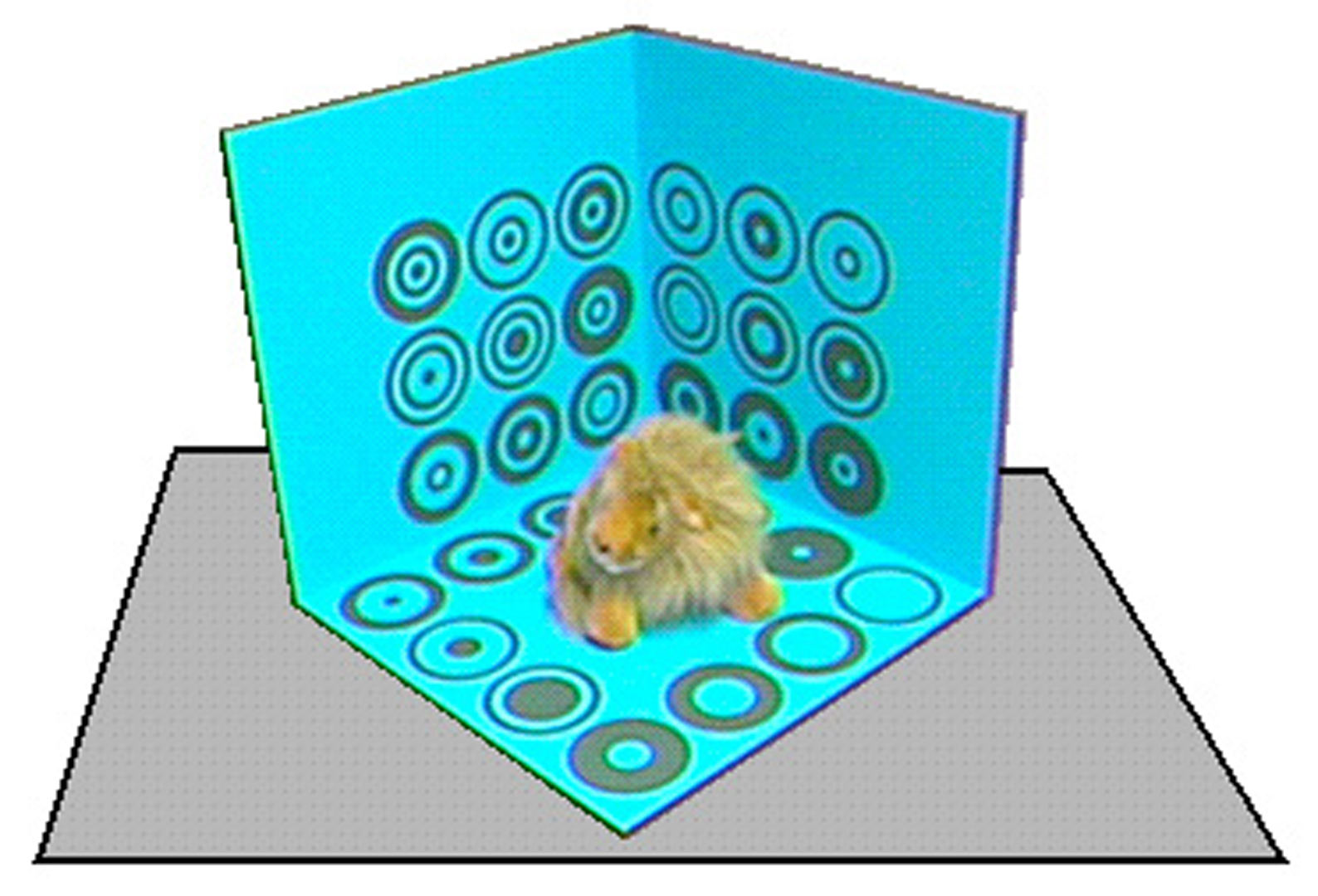“The lumigraph” by Gortler, Grzeszczuk, Szeliski and Cohen
Conference:
Type(s):
Title:
- The lumigraph
Presenter(s)/Author(s):
Abstract:
This paper discusses a new method for capturing the complete appearance of both synthetic and real world objects and scenes,representing this information, and then using this representation to render images of the object from new camera positions. Unlike the shape capture process traditionally used in computer vision and the rendering process traditionally used in computer graphics, our approach does not rely on geometric representations. Instead we sample and reconstruct a 4D function, which we call a Lumigraph. The Lumigraph is a subsetof the complete plenoptic function that describes the flow of light at all positions in all directions. With the Lumigraph, new images of the object can be generated very quickly, independent of the geometric or illumination complexity of the scene or object. The paper discusses a complete working system including the capture of samples, the construction of the Lumigraph, and the subsequent rendering of images from this new representation.
References:
1. ADELSON, E. H., AND BERGEN, J. R. The plenoptic function and the elements of early vision. In ComputationalModels of Visual Processing, Landy and Movshon, Eds. MIT Press, Cambridge, Massachusetts, 1991, ch. 1.
2. ASHDOWN, I. Near-field photometry: A new approach. Journal of the Illumination Engineering Society 22, 1 (1993), 163-180.
3. BENTON, S. A. Survey of holographic stereograms. Proceedings of the SPIE 391 (1982), 15-22.
4. BOLLES, R. C., BAKER, H. H., AND MARIMONT, D. H. Epipolar-plane image analysis: An approach to determining structure from motion. International Journal of Computer Vision 1 (1987), 7-55.
5. BURT, P. J. Moment images, polynomial fit flters, and the problem of surface interpolation. In Proceedings of Computer Vision and Pattern Recognition (June 1988), IEEE Computer Society Press, pp. 144-152.
6. CHEN, S. E. Quicktime VR – an image-based approach to virtual environment navigation. In Computer Graphics, Annual Conference Series, 1995, pp. 29-38.
7. CHEN, S. E., AND WILLIAMS, L. View interpolation for image synthesis. In Computer Graphics, Annual Conference Series, 1993, pp. 279-288.
8. CHUI, C. K. An Introduction to Wavelets. Academic Press Inc., 1992.
9. HALLE, M. W. Holographic stereograms as discrete imaging systems. Practical Holography VIII (SPIE) 2176 (1994), 73-84.
10. HOPPE, H. Progressive meshes. In Computer Graphics, Annual Conference Series, 1996.
11. KATAYAMA, A., TANAKA, K., OSHINO, T., AND TAMURA, H. A viewpoint independent stereoscopic display using interpolation of multi-viewpoint images. Steroscopic displays and virtal reality sytems H (SPIE) 2409 (1995), 11-20.
12. KLINKER, G. J. A PhysicaI Applvach to Color Image Understanding. A K Peters, Wellesley, Massachusetts, 1993.
13. LAURENTINI, A. The visual hull concept for silhouette-based image understanding. IEEE Transactions on Pattern Analysis and Machine lntelligence 16, 2 (February 1994), 150-162.
14. LAVEAU, S., AND FAUGERAS, O. 3-D scene representation as a collection of images and fundamental matrices. Tech. Rep. 2205, INRIA-Sophia Antipolis, February 1994.
15. LEVIN, R. E. Photometric characteristics of light-controlling apparatus. Illuminating Engineering 66, 4 (1971), 205-215.
16. LEVOY, M., AND HANRAHAN, P. Light-fieldrendering. In Computer Graphics, Annual Conference Series, 1996.
17. LEWIS, R. R., AND FOURNIER, A. Light-driven global illumination with a wavelet representation of light transport. UBC CS Technical Reports 95-28, University of British Columbia, 1995.
18. LITWINOWICZ, P., AND WILLIAMS, L. Animating images with drawings. In Computer Graphics, Annual Conference Series, 1994, pp. 409-412.
19. MCMILLAN, L., AND BISHOP, G. Plenoptic modeling: An image-based rendering system. In Computer Graphics, Annual Conference Series, 1995, pp. 39-46.
20. MITCHELL, D. P. Generating antialiased images at low sampling densities. Computer Graphics 21, 4 (1987), 65-72.
21. POTMESIL, M. Generating octree models of 3D objects from their silhouettes in a sequence of images. Computer Vision, Graphics, and Image P~vcessing 40 (1987), 1-29.
22. POWELL, M. J. D., AND SWANN, J. Weighted uniform sampling – a monte carlo technique for reducing variance. J. Inst. Maths Applics 2 (1966), 228-236.
23. ROSENFELD, A., AND KAK, A. C. DigitalPicture P~vcessing. Academic Press, New York, New York, 1976.
24. SIMONCELLI, E. P., FREEMAN, W. T., ADELSON, E. H., AND HEEGER, D. J. Shiftable multiscale transforms. IEEE Transactions on Information Theory 38 (1992), 587-607.
25. SNYDER, J. M., AND KAJIYA, J. Y. Generative modeling: A symbolic system for geometric modeling. Computer Graphics 26, 2 (1992), 369-379.
26. SZELISKI, R. Rapid octree construction from image sequences. CVGIP: Image Understanding58, 1 (July 1993), 23-32.
27. TAUBIN, G. A signal processing approach to fair surface design. In Computer Graphics, Annual Conference Series, 1995, pp. 351-358.
28. TERZOPOULOS, D. Regularization of inverse visual problems involving discontinuities. IEEE PAMI 8, 4 (July 1986), 413-424.
29. TSAI, R. Y. A versatile camera calibration technique for high-accuracy 3D machine vision metrology using off-the-shelfTV cameras and lenses. IEEE Journal of Robotics and Automation RA-3 , 4 (August 1987), 323-344.
30. WERNER, Y., HERSCH, R. D., AND HLAVAC, g. Rendering real-world objects using view interpolation. In Fifth International Conference on Computer Vision (ICCV’ 95) (Cambridge, Massachusetts, June 1995), pp. 957-962.
31. WILLSON, R. G. Modeling and Calibration of Automated Zoom Lenses. PhD thesis, Carnegie Mellon University, 1994.





